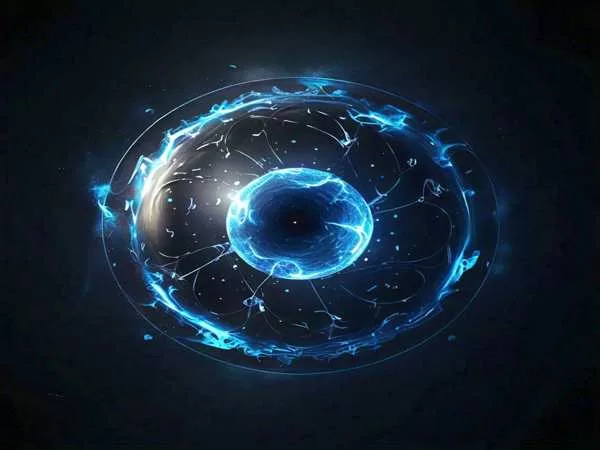Heaviest Antimatter Nucleus Discovered! What It Means for the Universe’s Origins
At the Relativistic Heavy Ion Collider (RHIC), an atom smasher that recreates the conditions of the early universe, scientists have made a groundbreaking discovery. By analyzing particle collisions, researchers uncovered the heaviest antimatter nucleus ever recorded: antihyperhydrogen-4. This discovery sheds light on the mysteries of antimatter and may provide clues to one of the most perplexing questions in physics—why the universe is dominated by matter, even though matter and antimatter are believed to have been created in equal amounts during the Big Bang.
Recreating the Early Universe at RHIC
The RHIC, located at the U.S. Department of Energy’s (DOE) Brookhaven National Laboratory, is one of the most powerful machines for studying particle physics. By smashing atomic nuclei together at nearly the speed of light, RHIC creates conditions similar to those just moments after the Big Bang. In these collisions, the boundaries of protons and neutrons break down into their most fundamental components, quarks, and gluons, forming a quark-gluon plasma.
Scientists working on RHIC’s STAR Collaboration have used the massive particle detector to capture the debris from these collisions. The goal is to analyze how particles form, including both matter and antimatter. Remarkably, RHIC generates almost equal amounts of matter and antimatter in these collisions, making it an ideal environment to study the differences between the two and investigate why matter dominates our universe.
The Heaviest Antimatter Nucleus: Antihyperhydrogen-4
The scientists’ discovery, antihyperhydrogen-4, is composed of four antimatter particles: an antiproton, two antineutrons, and one antihyperon (specifically an antilambda particle). This marks the heaviest antimatter nucleus ever detected.
Prior to this discovery, the heaviest known antimatter nucleus was antihelium-4, composed of two antiprotons and two antineutrons. The addition of an antihyperon to the mix elevates antihyperhydrogen-4 to a new class of exotic antimatter.
The detection of this unstable antihypernucleus is no small feat. According to STAR physicist Hao Qiu, finding these particles is extremely rare because the components must emerge from the quark-gluon plasma at the right time, in the right place, and moving in the same direction to combine and form the antihypernucleus. Essentially, it’s like finding a needle in a haystack.
How Scientists Detected Antihyperhydrogen-4
To identify antihyperhydrogen-4, scientists looked for its decay products. One of these products is antihelium-4, which was previously detected in RHIC collisions, while the other is a simple positively charged particle called a pion (pi+). By retracing the trajectories of antihelium-4 and pi+ particles, scientists could determine if they emerged from a single point, indicating that they originated from the decay of an antihyperhydrogen-4 nucleus.
The process of sifting through the collision data was painstaking. For every antihelium-4 particle, there could be hundreds or even thousands of pi+ particles. Researchers had to identify the rare instances where the tracks of these particles intersected at a point far enough from the collision to be the result of antihyperhydrogen-4 decay. After eliminating background noise and potential false positives, the scientists identified 22 candidate events, with an estimated background count of 6.4. This means that around 16 of the events likely represented true antihyperhydrogen-4 nuclei.
Why Does Antimatter Matter?
The discovery of antihyperhydrogen-4 represents a major step forward in understanding antimatter and its role in the universe. Despite the equal creation of matter and antimatter during the Big Bang, the universe as we know it is overwhelmingly composed of matter. The question of why antimatter did not annihilate all matter, leaving nothing but energy, remains one of the most significant mysteries in modern physics.
Junlin Wu, a STAR collaborator and graduate student at Lanzhou University and the Institute of Modern Physics in China, emphasized that antimatter behaves almost identically to matter, except for having opposite charges. Yet, this tiny difference has led to a universe dominated by matter. “Why our universe is dominated by matter is still a question, and we don’t know the full answer,” Wu said.
The discovery of heavy antimatter nuclei like antihyperhydrogen-4 allows scientists to make more precise comparisons between matter and antimatter. By studying the properties and decay rates of these particles, researchers hope to uncover subtle differences that could explain the matter-antimatter imbalance.
Next Steps in Antimatter Research
The discovery of antihyperhydrogen-4 has set the stage for further investigations. One of the next steps for the STAR team is to compare the mass difference between matter and antimatter nuclei, including hyperhydrogen-4 (the ordinary matter counterpart to antihyperhydrogen-4). Understanding these mass differences may reveal hidden asymmetries that could help explain the imbalance in the universe.
Additionally, scientists are continuing to investigate potential violations of fundamental symmetries in physics. While the experiments have not yet revealed any significant deviations, even a small violation of symmetry could lead to groundbreaking insights into the nature of the universe.
The Significance of RHIC and Future Research
The RHIC’s ability to recreate conditions of the early universe and produce equal amounts of matter and antimatter offers unique opportunities for physicists. Supported by the DOE’s Office of Science, Brookhaven National Laboratory, and other international organizations, this research is at the forefront of exploring some of the most fundamental questions about our universe.
Understanding antimatter’s role could one day provide answers to why we exist at all. For now, the discovery of antihyperhydrogen-4 brings us closer to solving the riddle of the universe’s origins and opens new doors for future exploration.

